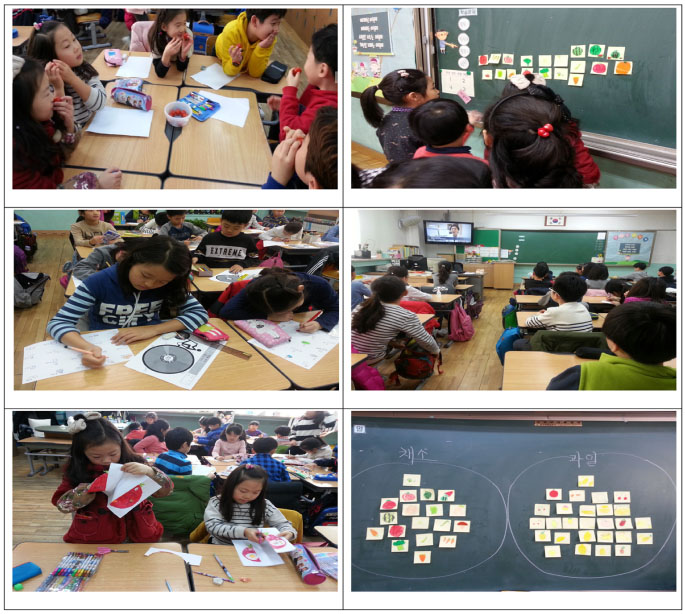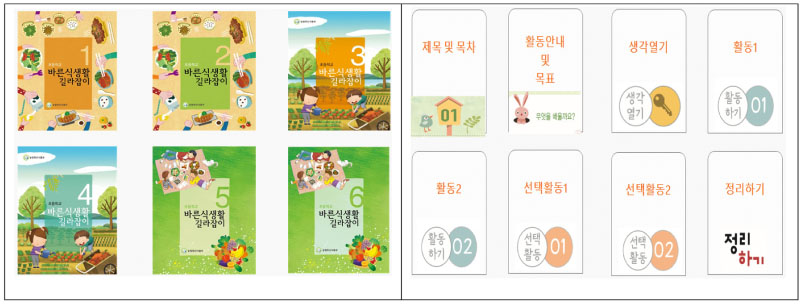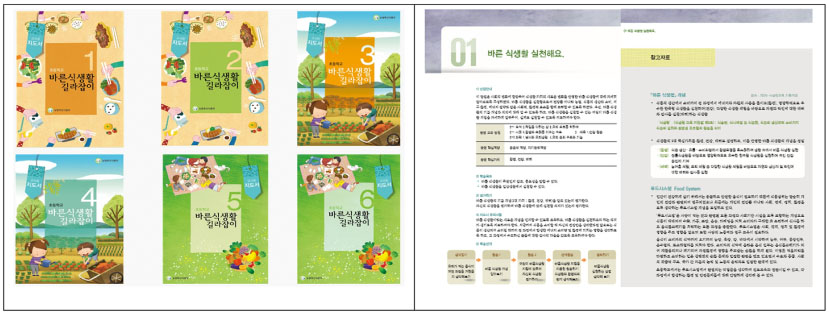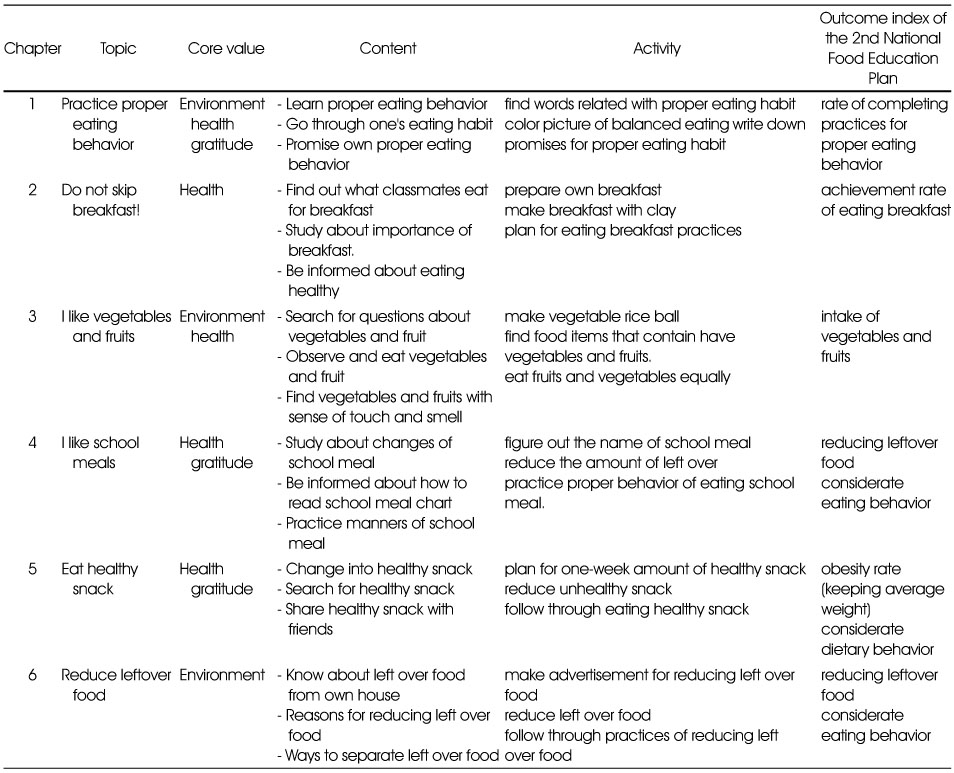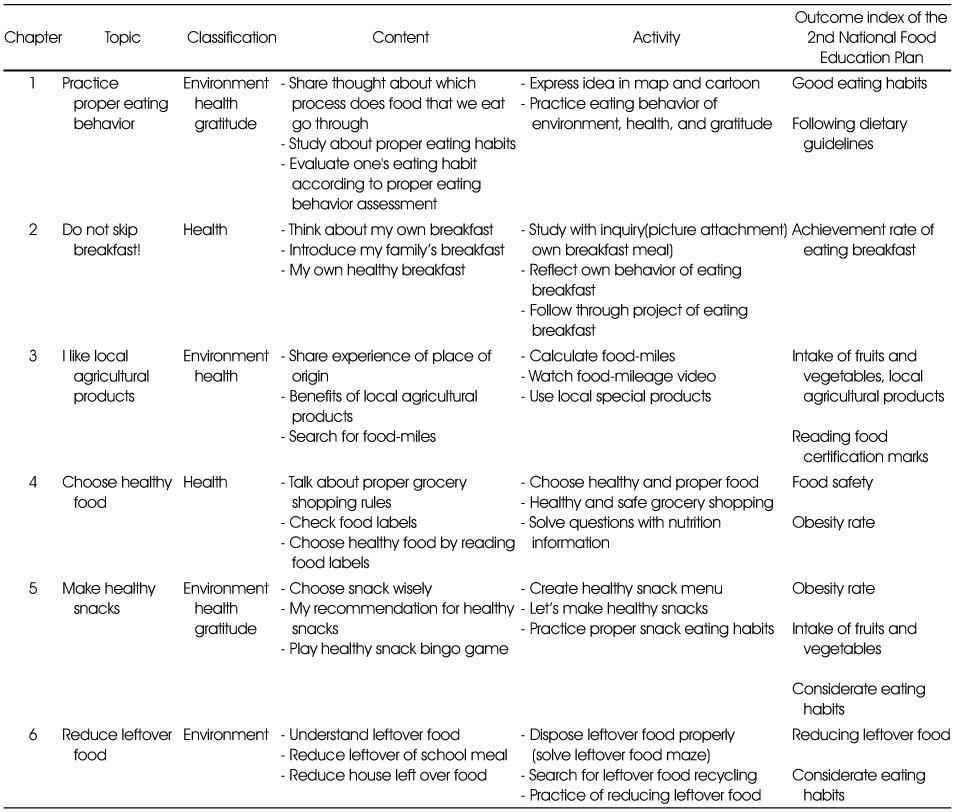The Development of ‘Good Dietary Life Guide’ Textbooks for Elementary School Students
Article information
Abstract
Objectives
This study aimed to develop dietary education textbooks for elementary school students by focusing on the three core values of environment, health and gratitude from the National Food Education Plan.
Methods
The contents of textbooks and teacher's guidebooks were developed with brainstorming of the authors as well as consultation with experts and by considering not only the three core values of environment, health, and gratitude, but also the performance indicators of the 2nd National Food Education Plan and the key competencies and creative convergence approach of the 2015 revised national curriculum.
Results
A total of 12 different dietary education textbooks named ‘Good Dietary Life Guide’ and the teachers' guidebooks from the first to the sixth grade of elementary school were developed. The textbooks were fundamentally developed connecting the three core values, the outcome indices of the 2nd National Food Education Plan and the key competences of the 2015 revised national curriculum. Various educational activities such as thinking, debate, writing, cooperative learning, experience, practice were included to promote students' participation. These books could be utilized in every field of dietary education targeting elementary students such as creative experiential activity, convergent classes (integrated subjects, Practical arts, Social studies, Science, Moral education and Korean), after school classes, rural experience, general agricultural education, after-school child care services and community child care centers.
Conclusions
The continuous and repetitive use of the textbooks from the first to the sixth grade would contribute to the improvement of food habits and the personalities of elementary school students, and consequently make the students grow up as healthy citizens.
Acknowledgments
This study was supported by the Ministry of Agriculture, Food and Rural Affairs in 2015.

